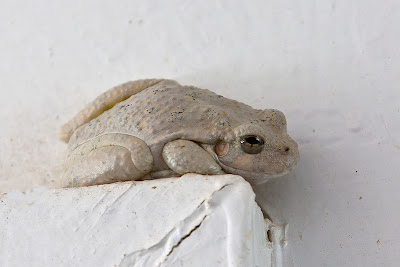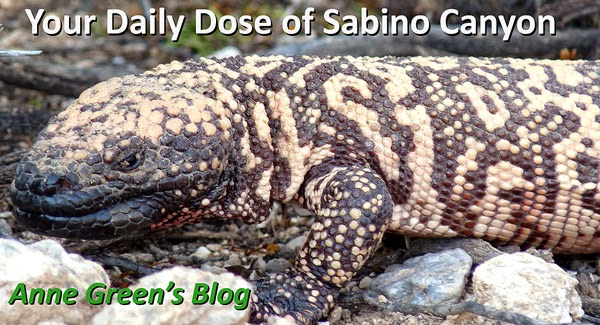 |
| Photo by Marty Horowitz 10/23/2012 |
Wednesday, October 31, 2012
Cue the animals...
Tuesday, October 30, 2012
Happy Owl-o-ween
| Photos by Matt Ball 10/10/12 |
We took my "oldest" friend (i.e., friend I've known the longest - 31+ years) to the ASDM when she was visiting recently (from Michigan), and had perfect timing. The trainers were working with this 5-month-old barn owl in preparation for the Raptor Free Flight and let us stay to watch. This owl seemed reluctant to fly over us while we were standing, so we crouched down and waited. He zoomed about 2 inches from my friend's head! Very cool!
Monday, October 29, 2012
Red is for hummingbirds
| Photo by Matt Ball 10/23/2012 |
Hummingbird banding is over for this year, and soon the feeders in the canyon will be taken down. Fortunately for those birds who stay year round, (not only are there plenty of feeders in the area, but also) there are sources of nectar in these aptly-named Hummingbird Trumpets (Epilobium canum ssp. latifolium). Page 129 in Mountain Wildflowers of Southern Arizona by Frank S. Rose. If you don't already have this great book, pick it up at the Desert Museum, the Sabino Canyon Visitor Center bookstore, online, wherever you can! You'll be glad you did.
Sunday, October 28, 2012
Welcome back to our Pal (fka) Luke
 |
| Photos by Marty Horowitz, 10/24/2012 |
 |
| His best side |
Text from Mark Hengesbaugh:
We have got to change this white-patched Phainopepla's nickname from "Luke," for leucistic to "Pal," for Partial Albino. It turns out we've been using the wrong term, no question. See Sibley, Field Guide Western NA intro p. 13. In Partial Albino [phainopeplas], some of the feathers are pure white. In leucistic [phainopeplas], normal patterns are visible but all plumage is paler than normal, usually pale creamy brown. (paraphrasing).
So, it's "welcome back Pal." This is at least the 3rd year in a row he's come back to his territory near the corral.And here's the evidence - in black and white!
2011 photo 2010 photo
Wednesday, October 17, 2012
In the meantime...
I need to take a week or so 'off' from doing the blog (very busy at work). In the meantime, take a look through the archives from:
There might be a quiz....
There might be a quiz....
Tuesday, October 16, 2012
Monday, October 15, 2012
More Butterflies
 |
| Dainty Sulphur |
 |
| Ceraunus Blue |
Both photos by Marty Horowitz; both butterflies on Wright Bee Flowers (Hymenothrix wrightii). All links from the always useful sites by T. Beth Kinsey.
Sunday, October 14, 2012
Giant Swallowtail Salute
 |
| Photo by Marty Horowitz 10/11/12 |
Marty assures me that this photo is unaltered. What a sight! Marty writes:
[T]hese are Giant Swallowtails, which have a single tail on each hind wing. However the first and second butterflies are each missing one of their tails, likely due to attacks by birds, demonstrating how their design lets them sacrifice a non-essential piece of themselves in order to survive, not unlike a lizard tail (but butterfly "tails" don't regenerate).
Saturday, October 13, 2012
Herps
 |
| Photo by Ned Harris 10/02/2012 |
Canyon Treefrog taking a potty break. Note the great camouflage.
 |
| Photo by Marty Horowitz |
Gopher Snake taking a road trip.
| Photo by Matt Ball 10/6/2012 |
A tiny Ornate Tree Lizard in the hand is worth not stepping on.
I don't recommend trying to catch lizards, but I needed to move this little one from a dangerous spot in my yard. Looked like s/he was playing dead, then scampered away in a hurry.
Friday, October 12, 2012
Thursday, October 11, 2012
Wednesday, October 10, 2012
Lucky!
| Photo by Lyn Hart 10/01/2012 |
Taking her lunch break at the picnic tables by the visitor center, Lyn saw this Zebra-tailed Lizard hanging out. Didn't look too comfortable. She freed this little one and s/he scurried off. Lucky after all.
Be sure to check out Lyn's condor tapestry. Guess whose photo she used as the model?
Tuesday, October 9, 2012
66 degrees of Ned Harris
At long last, the 2nd edition of Hawks in Flight is out! This new edition has 66 pics from our favorite photographer of photogenic flyers, Ned Harris. Whoo hoo!
Monday, October 8, 2012
Unexpected
Sunday, October 7, 2012
Morning Glory Trail
| Photo by Matt Ball 9/22/2012 |
These beautiful Bird's Foot Morning Glories (Ipomoea ternifolia var. leptotoma) were lined up nicely on the Phoneline link trail.
Saturday, October 6, 2012
Neither wire nor lettuce
| Close-up photo by Matt Ball 9/22/2012 |
These delicate flowers on thin stems are easy to overlook. They are called Wire Lettuce (Stephanomeria pauciflora). (I'm not making this up!) In the Sunflower family (Asteraceae).
Friday, October 5, 2012
Enter carefully
| Photo by Matt Ball 9/22/2012 |
This is most likely the nest of a Cactus Wren; and it's definitely in a Teddybear Cholla (Cylindropuntia bigelovii). These chollas generally grow on the hillsides and reproduce asexually; a piece will fall off (or get caught on a hiking animal) and take root. Teddybear Chollas in the same area are usually clones.
Thursday, October 4, 2012
Ivyleaf Morning Glory
 |
| Photo by Ned Harris 9/17/2012 |
Wednesday, October 3, 2012
Tuesday, October 2, 2012
Scarlet Creeper
 |
| Photo by Ned Harris 9/17/2012 |
Scarlet Creeper (Ipomoea cristulata) is in the Morning Glory family (Convolvulaceae). The flowers are about the size of a dime or smaller. There are quite a few plants along the Bear Canyon bridge.
Monday, October 1, 2012
Tumamoc Globeberry
 |
| Photos by Tom Skinner 9/3/2012 |
Subscribe to:
Posts (Atom)





